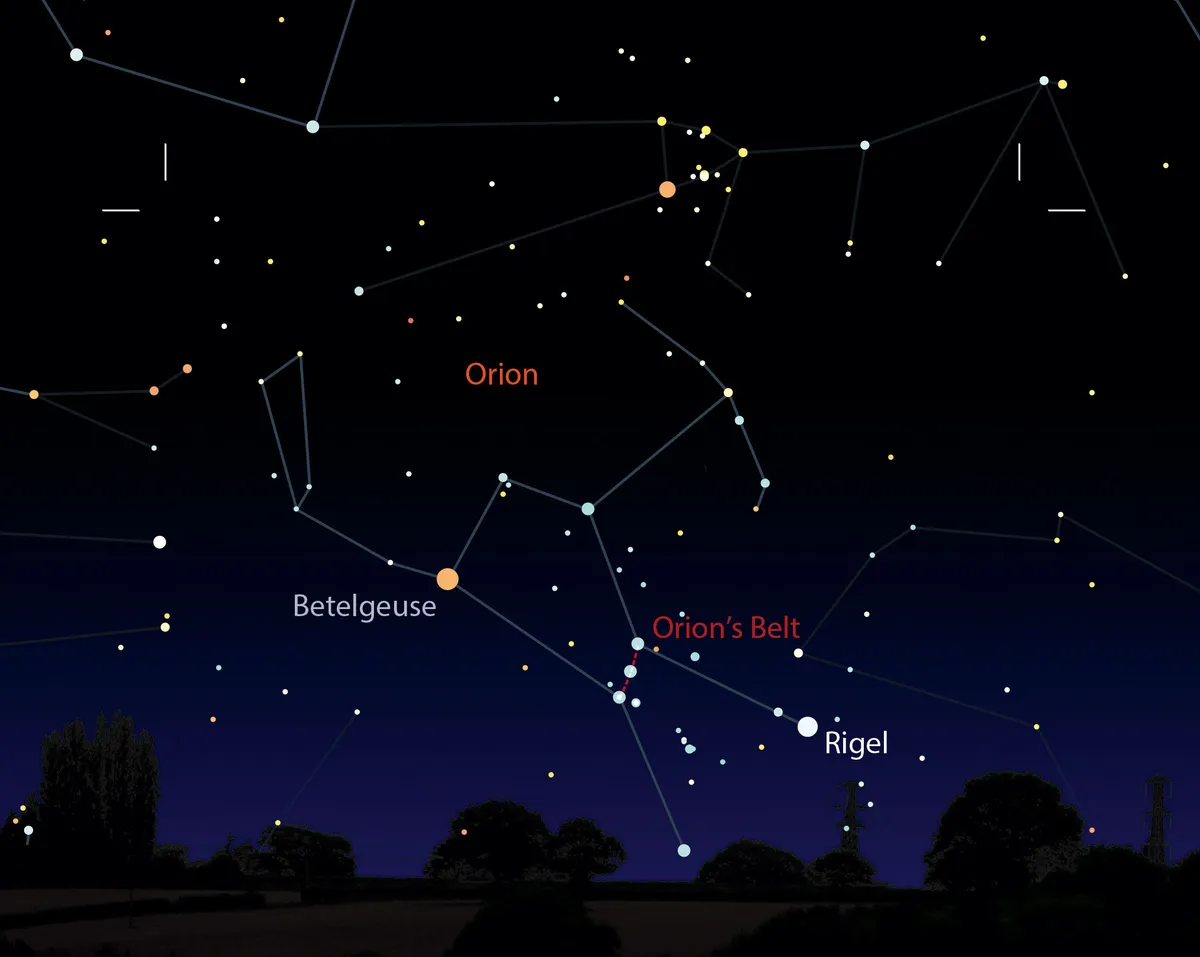Betelgeuse is one of the most iconic, and brightest, stars in the night sky. If you want to start learning the names and positions of specific stars, it’s a great place to start.
The star’s name has its origins in Arabic, and there’s no consensus on whether the ‘g’ is hard or not in the Westernised version. But a common way of pronouncing it is like the 1988 filmBeetlejuice.
You can see Betelgeuse with the naked eye. To find it, look first for the three stars that make up Orion’s Belt. This famous star pattern (‘asterism’) will be rising above the eastern horizon at 3am at the start of September, getting earlier each night (by the end of September, it’ll rise just after 1am).
Next, look for the bright, reddish star up and to the left of the belt. This is Betelgeuse, which marks Orion’s right shoulder (or left as we look at it). If you miss the star in September, don’t worry – it’ll be visible until next April.

Betelgeuse’s colour is due to the fact that it is an ageing ‘red supergiant’ star, over one billion kilometres in diameter (that’s nearly 1,000 times the size of our Sun). Like other red supergiants, it will end its life by exploding in a dramatic supernova. This will be so bright that we can see it during the daytime on Earth.
In October 2019, Betelgeuse started to become unusually dim, prompting speculation that it was about to explode. But the dimming stopped in February 2020, and it turned out to be due to huge cool patches, or ‘starspots’, on the star’s surface.
The current best estimate is that the supernova will happen within the next 100,000 years, so it’s likely we have plenty of time to enjoy the red shine of Betelgeuse in the night sky.
Read more:
- How can I see the Andromeda Galaxy?
- How can I see Jupiter and Saturn this week?
- How can I spot the International Space Station?
- How do I find the North Star?
Looking for stargazing tips? Checkout our complete astronomy for beginners UK guide.
